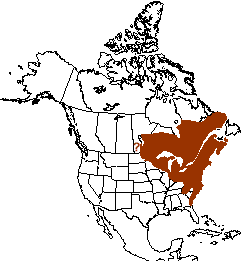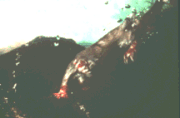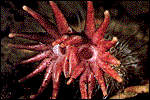|
Star-nosed mole Condylura cristata |
 |
 |
| Identification: Mass: 34-78 g Body length: 114-127 mm Tail length: 76-89 mm Colour: dark brown Young: 3-7 per litter Habitat: low, wet ground near lakes and streams Diet: small terrestrial invertebrates and earthworms; insect larvae, aquatic invertebrates |

|
Distribution: Most extensive distribution of any North American mole, and occurs substantially farther north than other species. Broadly distributed from the Atlantic region, including Cape Breton Island, in the east to eastern Manitoba in the west (an isolated population may occur in Riding Mountain National Park, Manitoba). In the United States this mole is found all along the Atlantic coast to extreme northern Florida, and among the Appalachian Mountains to eastern Tennessee and western South Carolina. |
| Selected Readings: |
Catania, K.C. 2000. A star is born. Natural History, 109:66-69. Petersen, K.E. and T.L. Yates. 1980. Condylura cristata. Mammalian Species, 129:1-4. van Zyll de Jong, C.G. Handbook of Canadian mammals. 1. Marsupials and insectivores. National Museum of Canada, Ottawa 210pp. Yates, T.L. 1983. The mole that keeps its nose clean. Natural History, 92:55-60. |

|

